Six distinctive woodpecker species in Iowa contribute to the state’s rich avian tapestry. From the vibrant Red-headed Woodpecker to the acrobatic Downy Woodpecker, these birds play essential roles in the local ecosystems.
This exploration delves into the diverse characteristics, habitats, and behaviours of the six woodpecker species found in Iowa.
From the towering trees of mature forests to the suburban landscapes, these woodpeckers navigate various environments, showcasing their adaptability.
As we uncover the unique features of each species – be it the striking Red-bellied Woodpecker or the impressive Pileated Woodpecker, a deeper understanding of Iowa’s avian biodiversity emerges.
Join us on a journey to discover the fascinating lives of these woodpeckers, appreciating the importance of their presence and the conservation measures necessary for their continued thriving in the Hawkeye State. Stay sharp.
Common Criteria of the Woodpeckers in Lowa
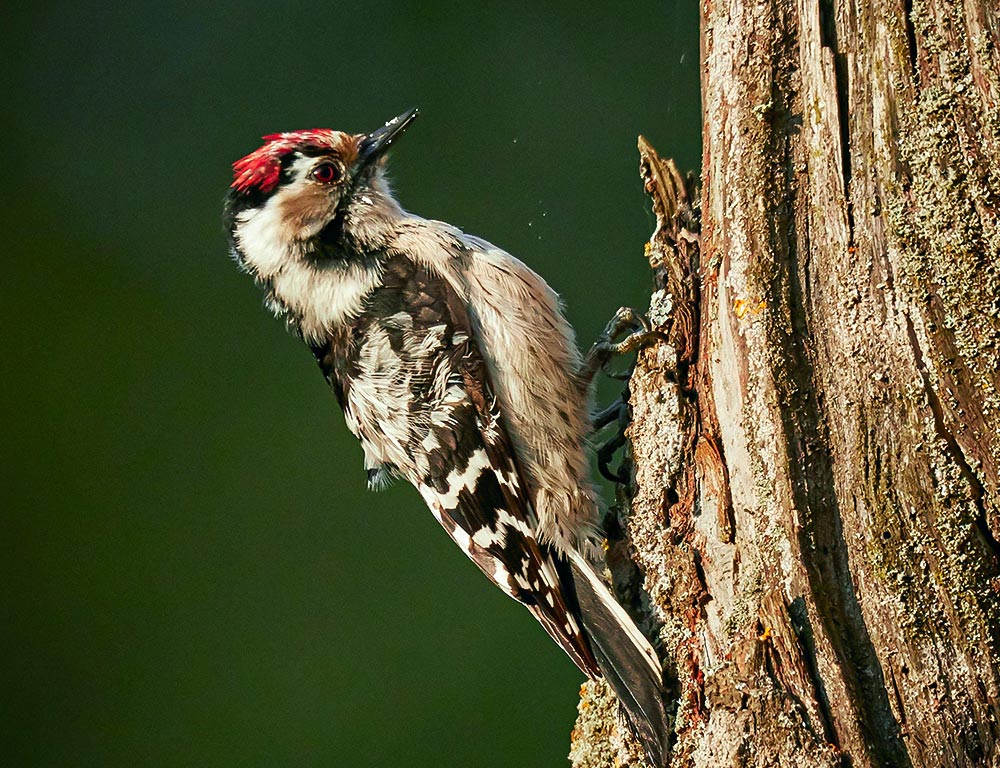
When considering the common criteria for woodpeckers in Iowa, several key factors contribute to their ecological importance and conservation needs:
Habitat Diversity
Woodpeckers in Iowa often inhabit various ecosystems, including mature forests, woodlands, and open areas.
Ensuring the preservation and diversity of these habitats is crucial for supporting their foraging and nesting behaviors.
Foraging Behavior
Woodpeckers are vital in controlling insect populations by foraging on tree bark for insects and larvae.
Conservation efforts should focus on maintaining healthy insect populations essential for woodpecker survival.
Nesting Sites
Woodpeckers typically nest in cavities, often excavated in dead or decaying trees. Protecting and providing suitable nesting sites is vital for their reproduction and population sustainability.
Food Availability
The availability of a diverse food supply, including insects, fruits, nuts, and sap, is critical for woodpeckers.
Conservation strategies should consider preserving natural food sources and minimizing the impact of factors like pesticide use.
Protection of Dead Trees (Snags)
Dead trees, or snags, serve as crucial habitats for woodpeckers. Preserving these standing dead trees is essential, as they provide nesting sites and attract insects that woodpeckers feed on.
Urban and Agricultural Interface
Managing the interface between these areas and woodpecker habitats is important as urbanisation and agriculture expand.
Implementing sustainable land use practices and minimizing negative impacts on woodpecker populations is key.
Mitigation of Threats
Identify and address potential threats to woodpeckers, such as habitat loss, competition for nesting sites, and climate change. Implementing mitigation strategies will contribute to their overall conservation.
Community Awareness and Involvement
Engage local communities in woodpecker conservation efforts by raising awareness about their ecological importance and promoting practices that support their habitats.
6 Woodpeckers in Lowa
Check out the diverse world of woodpeckers in Iowa, each with its unique characteristics and adaptations.
From the vibrant Red-headed Woodpecker to the ground-feeding Northern Flicker and the sap-loving Yellow-bellied Sapsucker, delve into the fascinating lives of these birds.
Explore their habitats, behaviours, and conservation status in this captivating exploration.
1. Downy Woodpecker
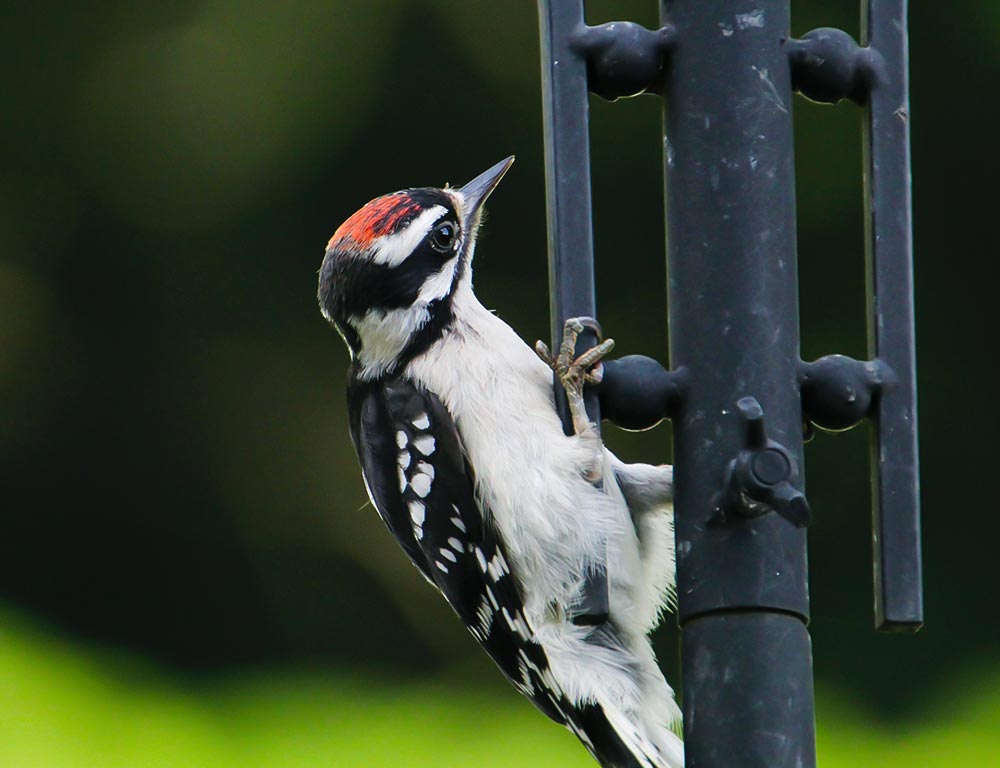
- Scientific name: Picoides pubescens
- Category: Woodpecker
- Population: Common
- Life span: 4-6 years
- Size: 5.5-7.1 inches
- Weight: 0.7-1.0 ounces
- Status: Least Concern
The Downy Woodpecker, the smallest North American woodpecker, is characterized by its black and white plumage and a small, red spot on the back of the male’s head.
Found in various wooded habitats in Iowa, these birds are acrobatic foragers, often hopping along branches and probing bark for insects.
With a cheerful, whinnying call, they are delightful in backyard bird feeders, showing a preference for suet and sunflower seeds.
2. Pileated Woodpecker
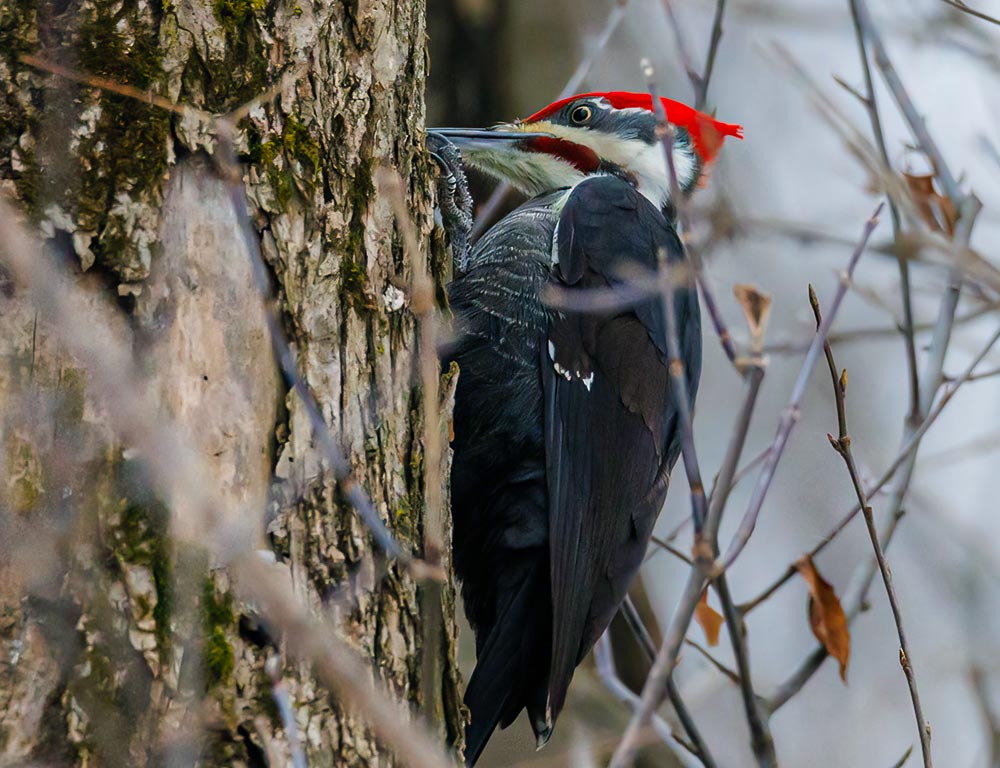
- Scientific name: Dryocopus pileatus
- Category: Woodpecker
- Population: Stable
- Life span: 7-10 years
- Size: 16-19 inches
- Weight: 8-12 ounces
- Status: Least Concern
The Pileated Woodpecker, the largest woodpecker in North America, is a striking bird with a distinctive red crest on its head. In Iowa, they inhabit mature forests and wooded areas.
These powerful birds excavate large rectangular holes in trees in search of carpenter ants and other insects.
Known for their loud, resonant drumming, they have a distinctive, almost prehistoric appearance.
Pileated Woodpeckers are vital in controlling insect populations and contributing to Iowa’s forests’ ecological balance.
3. Red-bellied Woodpecker
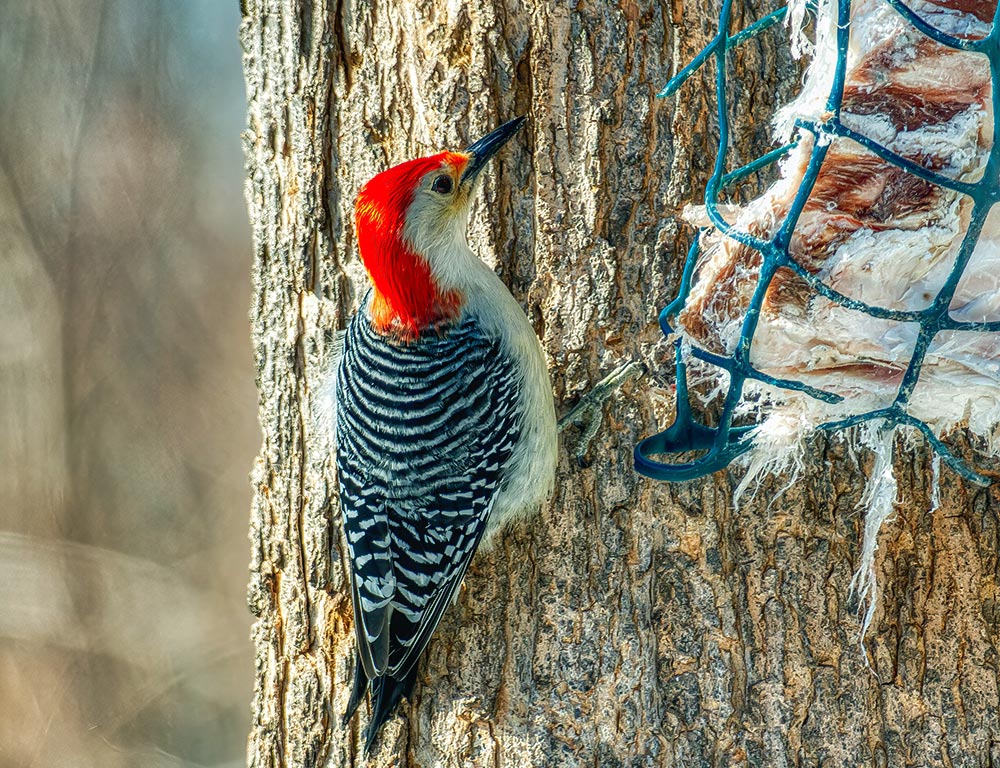
- Scientific name: Melanerpes carolinus
- Category: Woodpecker
- Population: Stable
- Life span: 9-13 years
- Size: 9-10.5 inches
- Weight: 2-3 ounces
- Status: Least Concern
Despite its name, the Red-bellied Woodpecker has only a faint reddish tint on its belly, with its most prominent feature being a vibrant red cap on the back of its head.
These woodpeckers are common in wooded areas, mixed forests, and suburban landscapes throughout Iowa.
Known for their adaptability, they feed on insects, fruits, and nuts. Their distinctive calls, a series of churrs and calls, are often heard in the treetops.
Red-bellied Woodpeckers are highly acrobatic, using their strong bills to probe bark for insects and their long, barbed tongues to extract prey.
They are cavity nesters, often choosing dead trees or limbs to excavate nests, which may later be used by other bird species.
Their resilience and adaptability make them well-suited to diverse habitats, contributing to their stable population in Iowa.
4. Red-headed Woodpecker
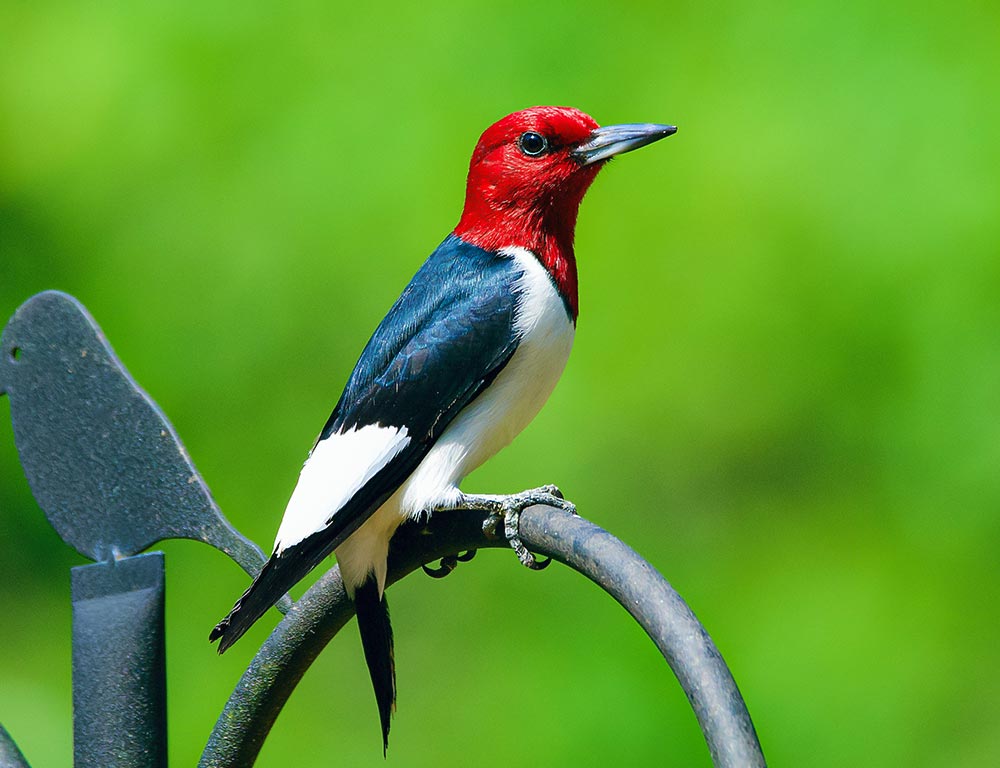
- Scientific name: Melanerpes erythrocephalus
- Category: Woodpecker
- Population: Declining
- Life span: 9-12 years
- Size: 7.5-9.1 inches
- Weight: 2.2-3.2 ounces
- Status: Near Threatened
The Red-headed Woodpecker is easily identified by its striking red head, white body, and black wings. Unfortunately, its population has declined due to habitat loss and competition for nesting sites.
Found in various habitats, including woodlands, orchards, and open country, they are known for catching insects in mid-air and caching food by wedging it into bark crevices.
Their striking appearance and unique behaviours make them a captivating species to observe, though conservation efforts are crucial to their survival.
5. Northern Flicker
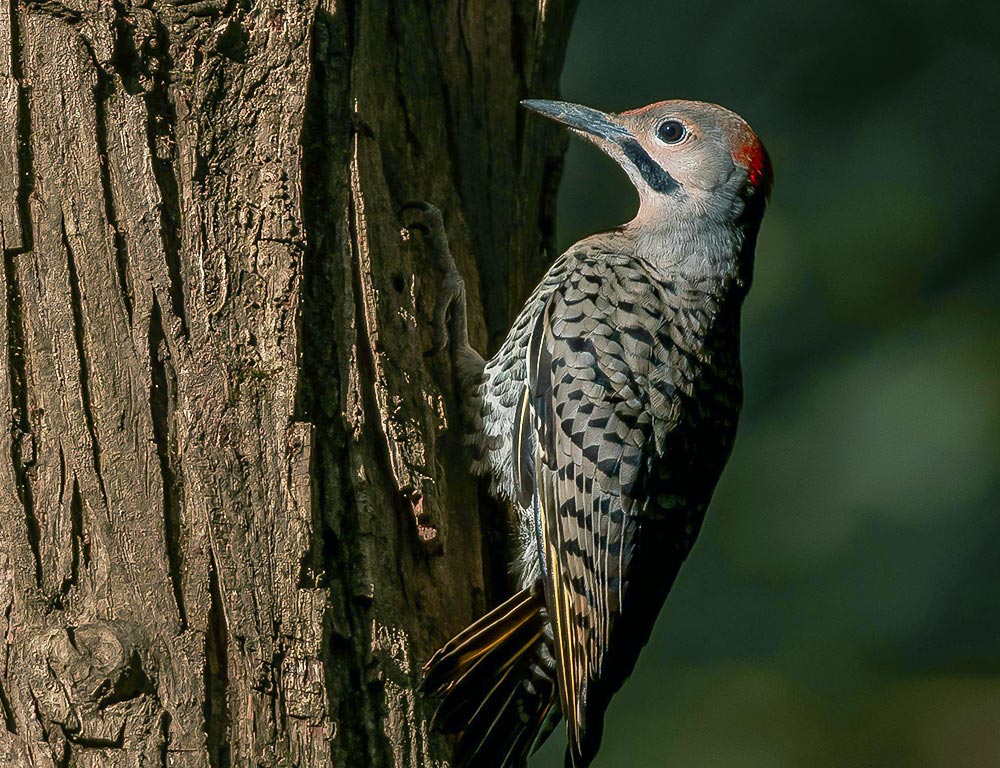
- Scientific name: Colaptes auratus
- Category: Woodpecker
- Population: Stable
- Life span: 6-11 years
- Size: 11-14 inches
- Weight: 3-5 ounces
- Status: Least Concern
The Northern Flicker is a medium to large woodpecker with a distinctive appearance, featuring a tan or brown body, a black crescent on its chest, and conspicuous black markings on its face.
Unlike many woodpeckers, flickers feed on the ground, primarily consuming ants. Their drumming on trees is less intense than that of other woodpeckers.
Northern Flickers are commonly found in open habitats, including fields, suburbs, and parks, and they are known for their “flickering” flight pattern. Their adaptability contributes to a stable population in Iowa.
6. Yellow-bellied Sapsucker
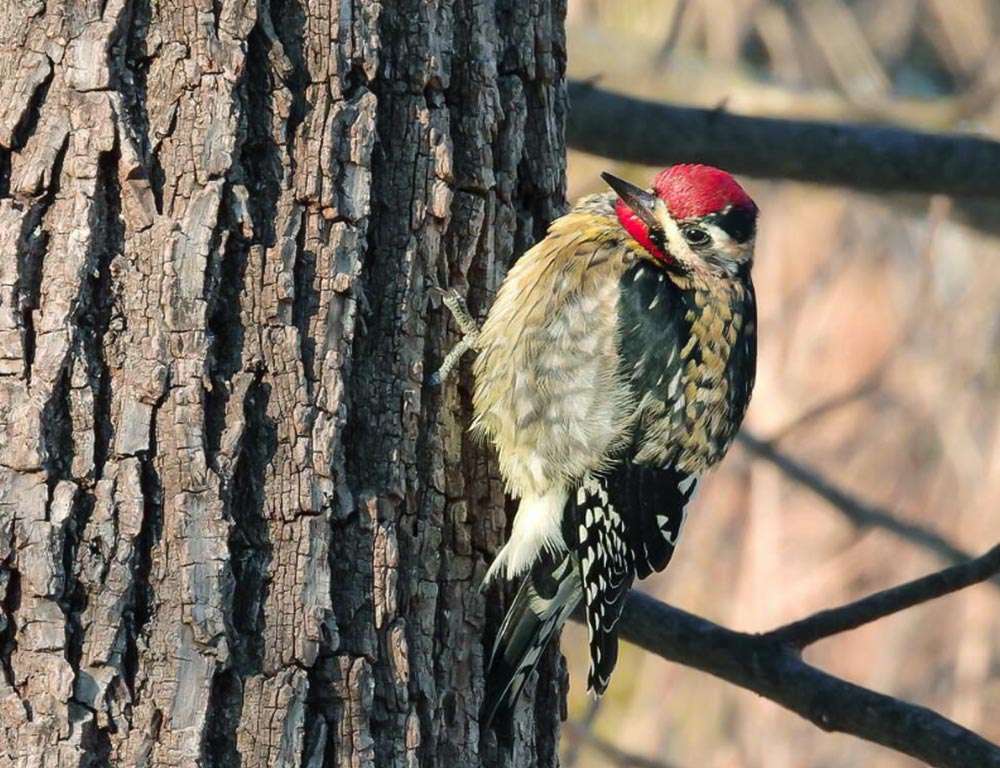
- Scientific name: Sphyrapicus varius
- Category: Woodpecker
- Population: Stable
- Life span: 4-8 years
- Size: 7-8.5 inches
- Weight: 1.5-2.4 ounces
- Status: Least Concern
The Yellow-bellied Sapsucker has a unique appearance with a black-and-white mottled pattern and, as the name suggests, a yellowish wash on its belly.
They are migratory and can be found in Iowa during the breeding season. Unlike other woodpeckers, sapsuckers feed on sap by drilling neat rows of holes in trees and then consuming the sap and insects attracted to it.
They are commonly found in forests, especially those with birch and maple trees.
Despite their drilling habits, their impact on tree health is generally minimal, and their stable population status reflects their ability to coexist with their environment.
Necessary Steps to Preserve Woodpeckers in Iowa
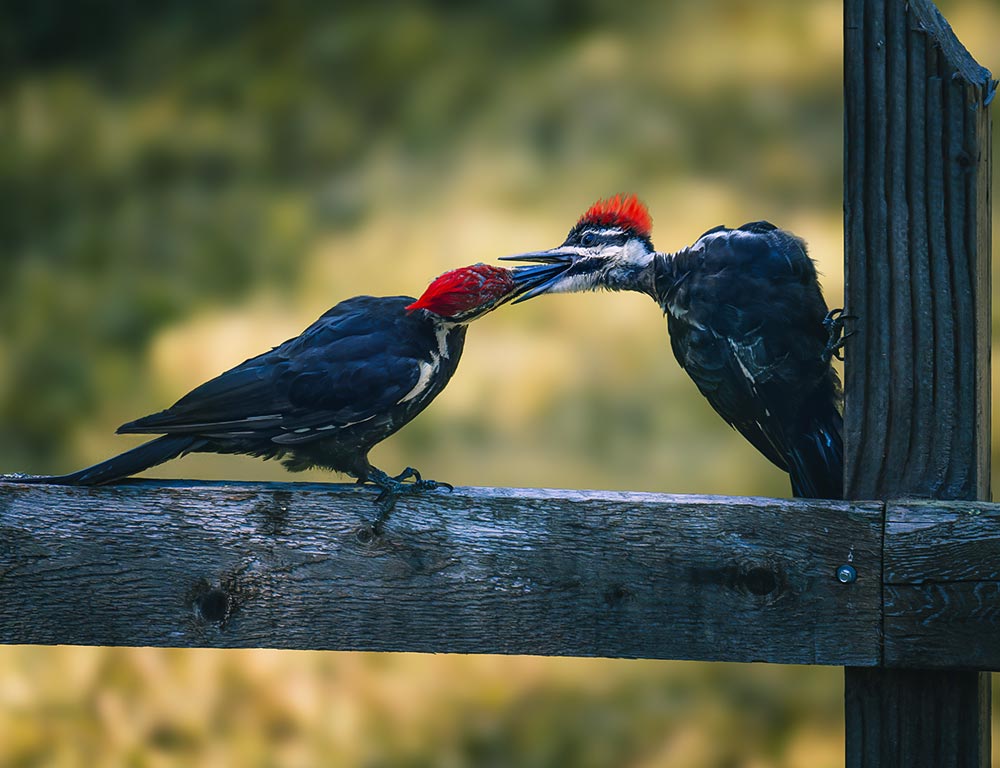
Preserving woodpeckers in Iowa requires a concerted effort to protect their habitats, address potential threats, and raise awareness about their importance in maintaining ecological balance. Key steps include:
Habitat Conservation
Ensure the preservation of diverse habitats, including mature forests, woodlands, and open areas, crucial for woodpeckers’ foraging and nesting.
Mitigating Habitat Loss
Implement measures to mitigate habitat loss due to urbanization, deforestation, and land development, considering sustainable practices.
Conservation Education
Increase public awareness through educational programs, highlighting the significance of woodpeckers in controlling insect populations and maintaining healthy ecosystems.
Protection of Nesting Sites
Safeguard potential nesting sites, such as dead trees and snags, by incorporating their protection into land management practices.
Reducing Pesticide Use
Encourage the adoption of environmentally friendly agricultural and forestry practices to minimize pesticide use and safeguard woodpeckers’ food sources.
Monitoring and Research
Support ongoing monitoring and research initiatives to track woodpecker populations, identify threats, and implement adaptive conservation strategies.
Collaborative Conservation Efforts
Foster collaboration among government agencies, conservation organizations, and communities to create a comprehensive approach to woodpecker preservation.
Promoting Sustainable Forestry
Advocate for sustainable forestry practices that maintain healthy ecosystems, including leaving standing dead trees for woodpecker nesting and foraging.
By implementing these necessary steps, Iowa can ensure the long-term preservation of its woodpecker populations, contributing to the overall biodiversity and health of the region’s ecosystems.
Wrapping Up
It is evident that these birds are integral to the state’s ecosystems. From their diverse habitats to the critical need for suitable nesting sites, the conservation of woodpeckers demands a holistic and collaborative approach.
Preserving their natural habitats, mitigating threats, and fostering community awareness are paramount.
As we embrace sustainable practices and protective measures, we contribute to the enduring legacy of these charismatic birds and enhance the overall health of Iowa’s environment. Best of luck.